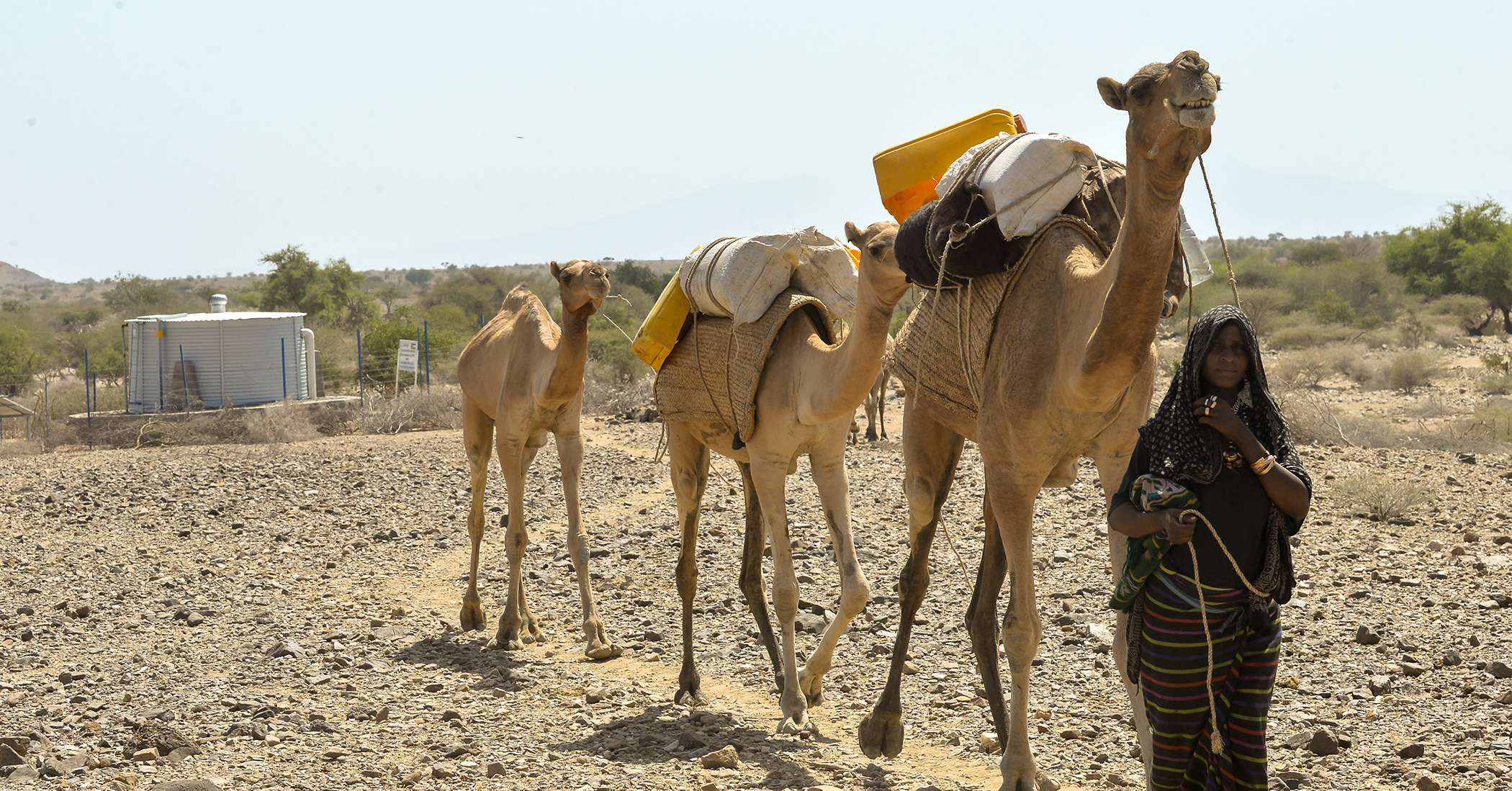
Menstruation is part of the process that makes human life possible. But almost universally—in the world’s richest countries and its poorest—women and girls face stigma and discrimination for this natural process. More than just an annoyance, this discrimination can manifest in low access to menstrual products and poor menstrual hygiene, and lead to high rates of infection, low rates of school attendance, and in some cases, cancer and death.
In Ethiopia’s Lowlands, pastoralist communities lead nomadic or semi-nomadic lives, primarily driven by the need to ensure food and water for their herds. Many traditional economic, educational, health and support initiatives rely on stationary structures and habits that don’t exist or are not prioritized in the Lowlands. The region is also prone to extreme drought and climate shocks. These physical factors and challenges produce priorities and norms that often differ from those in stationary communities.
To better understand how these physical factors and social norms impact menstrual health management (MHM) in the Lowlands region, USAID’s Lowland Water, Sanitation, and Hygiene (WASH) Activity, implemented by DT Global, conducted an assessment on MHM in the Lowland Southern Nations, Nationalities, and Peoples (SNNP) region, South Omo Zone, in 2019.
“We knew that incorporating MHM was vital to supporting women in the communities in which we worked,” says Nikita Salgaonkar, Program Manager for the USAID Lowland WASH Activity. “However, there was a lack of information on pastoralist communities. We felt it was important to assess the contextual situation prior to developing any programming around MHM in this region.” What the Activity found was a complex array of geographic, structural, and socio-economic constraints and norms that contribute high levels of stigma and low levels of support for MHM.
For many girls, the onset of menstruation can bring some amount of embarrassment and even fear. But for a girl in South Omo, a range of negative attitudes and norms around menstruation not only result in stigma but also limit hygienic support for menstruation, which can restrict or end her education. In this region, 34% of girls missed 2.4 days of school per month on average because of menstruation.

The USAID Lowland WASH Activity assessment found that existing low levels of sanitation and hygiene structures in schools, water and resource constraints, discriminatory beliefs around menstruation, and supply chain/economic issues around sanitation products all combined to leave girls unsupported.
Under resourcing leaves school latrines throughout the region largely non-functional. While girls and boys almost always have separate latrines at schools, they largely lack privacy for girls, water for washing, and space for changing and disposing of sanitary products.
In general, Lowland pastoralist communities need to make decisions about how to prioritize limited water and resources. This usually means prioritizing livestock and other essential needs above sanitation and hygiene structures and practices, especially because nomadic or semi-nomadic lifestyles mean that communities are not able to use structures for part of the year.
But beyond resource constraints, ingrained cultural norms lead to widespread ideas that the onset of menstruation makes girls simultaneously dirty and ready to be married off. Because of this, communities don’t see a need to use limited resources to facilitate the continued education of their girls.

Finally, while many girls in South Omo and similar regions would prefer commercially produced disposable sanitary pads, supply- and demand-side issues limit access to these products. To start, the remoteness of towns in these regions makes it difficult and costly for small stores to get sanitary items. Even when stores have sanitary products, often women and girls don’t know they do, or couldn’t afford them regardless, so don’t travel to stores to seek them out.
“Very few people knew that there is an MHM product called Eve,” a kiosk owner in Bena Tsemay town, South Omo, relayed to the assessment team. “Only a handful of women, not schoolgirls, came to buy this commodity, because only a few women knew that I have this commodity in my shop.”
Shame also plays into this equation. Cultural taboos around menstruation mean that women and girls are often embarrassed to ask for money for sanitary products from their families or purchase sanitary products from shopkeepers—especially male shopkeepers. The USAID Lowland WASH Activity assessment gives the example of a six-grade girl who was aware of different kinds of sanitary products and wanted to buy them but was afraid to ask her parents for money to make these purchases.

Like many issues in the Lowlands, MHM has similarities to country-wide trends and hyper-localized nuances. Making progress toward improved MHM will require taking these nuances into account. Initiatives such as creating latrine facilities in schools designed to facilitate MHM and exploring methods to bring affordable commercial sanitary products to rural Lowlands areas can help. It’s also crucial to change not just the physical factors that impact MHM, but the social ones. Using targeted and effective awareness raising for all students (not just girls) and their families on puberty and MHM is a key part of making sure girls can live without shame and continue their education after menstruation.